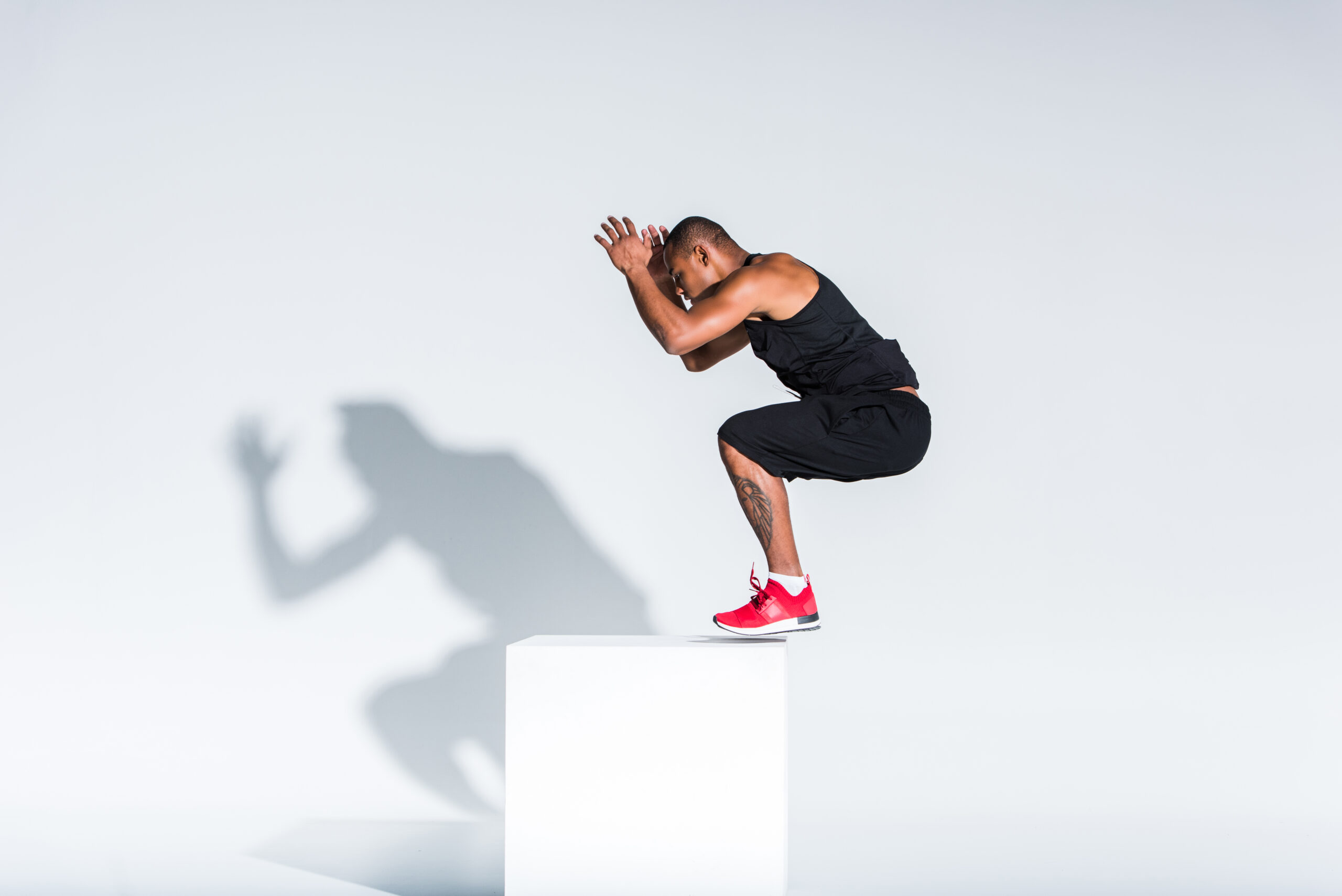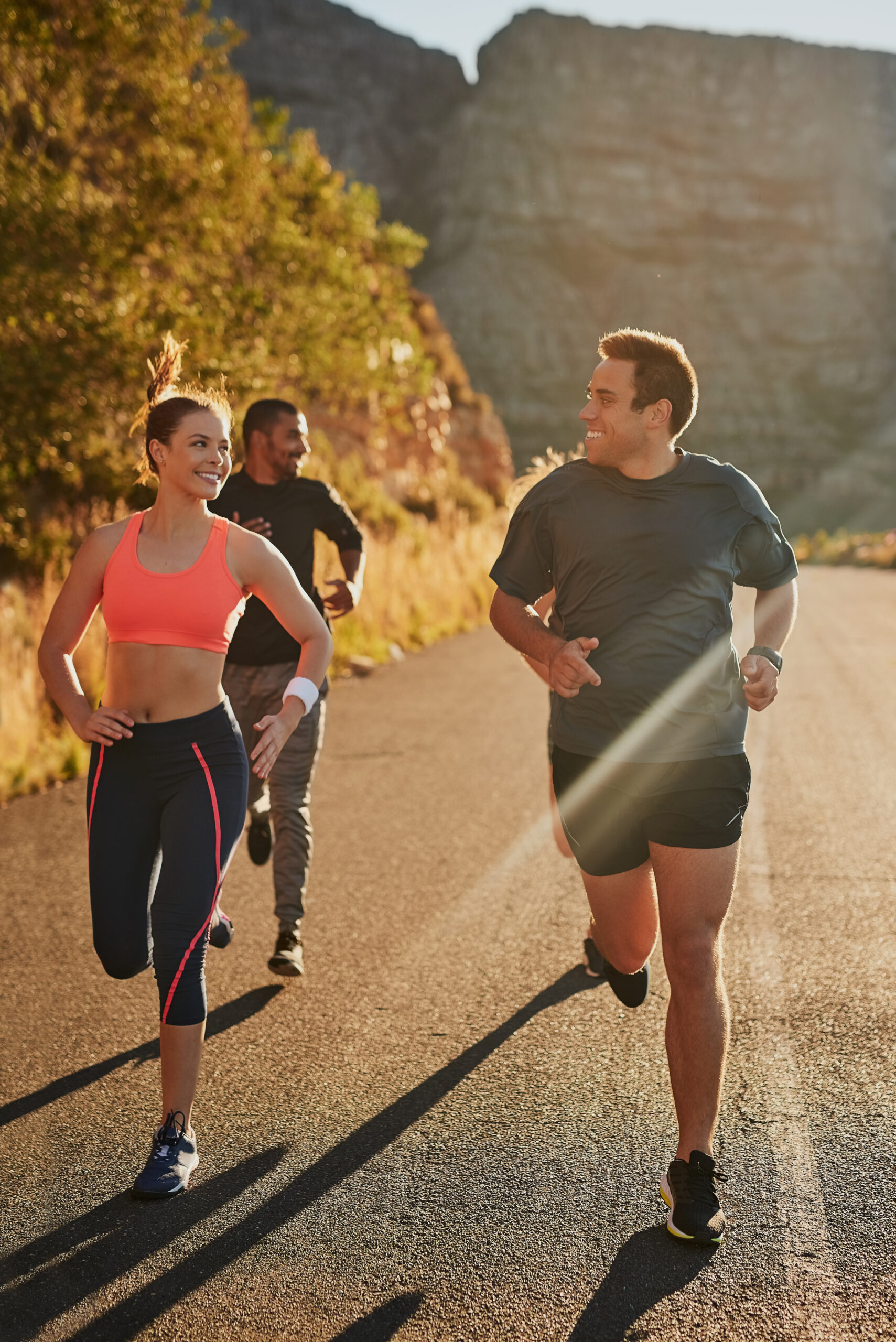Have you ever wondered why your legs feel a bit lopsided after all those invigorating runs? You’re in good company.
Whether you’re a seasoned marathoner or just dipping your toes into the running world, I’ve got something crucial to share with you.
Running, that exhilarating cardio adventure, does wonders for your fitness and those extra pounds. It’s like your legs are sculpted by the running gods themselves, right? Well, not quite.
There’s a sneaky culprit lurking in the shadows – muscle imbalances. They’re like the silent villains of the running world, and if left unchecked, they can turn your running paradise into a painful pitfall.
But fret not!
Today, I’m here to spill the beans on these muscle imbalances, understand what makes them tick, and, most importantly, discover how to outsmart them.
So, are you excited to dive into the world of balanced, pain-free running? Then let’s go.
Muscle Imbalances Explained
Muscle imbalances are like the yin and yang of your muscles.
Let me explain more. You’ve got muscles that do the heavy lifting, like the ones responsible for pulling off those impressive pull-ups at the gym. But what if these beefed-up muscles don’t have an equally tough opponent to spar with? That’s where the trouble starts.
Take our pull-up enthusiast, for instance. They’re nailing those upper body pulling exercises day in and day out. But bench presses or push-ups? Nah, it’s not their jam. The result? An upper body that’s like a seesaw, with one end doing all the heavy lifting while the other just chills.
Now, here’s the kicker – it’s not just the weightlifters who need to watch out. If you’re into any sport with repetitive moves, like our beloved running, you’re in the game too. Those marathon miles can be both a blessing and a curse, and the sneaky culprits are these muscular imbalances.
Here’s the deal: These imbalances are like tiny time bombs, ticking away as you hit the trails. They’re the reason you might feel those unnecessary aches and pains, and they can seriously cramp your running style.
The Solution
Alright, now that we’ve called out these muscle imbalances, it’s time to spill the beans on how to set things straight.
Here’s the deal – it might sound like Captain Obvious is in the room, but the best way to tackle these imbalances is by picking exercises that go head-to-head with those weaker muscles.
Let’s dive in.
A Fight of Planes – The Scoop behind the imbalances
Speedwork, hill sprints, and those long, glorious runs do wonders for sculpting your body into a lean, mean running machine. But there’s a catch, and it’s a hefty one. All this running comes at a cost – a rather substantial cost, if I may add.
You see when we lace up our running shoes and hit the pavement, our bodies rely heavily on a select group of muscles to propel us forward. These muscles are like the rockstars of the show, hogging the spotlight while the others play second fiddle in the background.
Enter the sagittal plane, the ruler of the running realm. This is where the action happens, where we move forward and backward like well-oiled machines. But hold on, what about the other two planes – the frontal and transverse? Well, they’re relegated to the sidelines during our running escapades.
And since we’re so fixated on that forward-backward motion, our calves and quads become the muscle MVPs, soaking up all the glory as they power us through. But what about the muscles in charge of the other two planes, like our shins and glutes? They’re left in the dust, growing weaker by the day.
Muscular imbalances can lead to a host of problems, from discomfort and pain to more serious issues like knee pain, muscle strains, Achilles tendonitis, piriformis syndrome, and IT band syndrome.
Problems linked to muscle imbalances
As you continue to rely on those dominant muscles, they start to put immense pressure and stress on various parts of your body.
Joints, ligaments, and even the very muscles you’re working so hard to strengthen become the victims of this one-sided affair.
The consequences? Well, they range from stalled fitness growth to discomfort and outright pain.
And let’s not forget about the more severe outcomes, like overuse injuries that can plague even the most dedicated runners.
We’re talking about the dreaded knee pain, bothersome muscle strains, Achilles tendonitis, the notorious piriformis syndrome, and the ever-persistent IT band syndrome.
It’s like a domino effect – one muscle group’s dominance leads to a breakdown in the harmony of your body’s movements, resulting in these unwelcome guests: pain and injury.
Common Muscle Imbalances in Runners
As you can tell now; muscle imbalances aren’t just an abstract concept. They can have a direct and tangible impact on your running and overall health.
Let’s break it down.
First up, let’s talk about those core muscles. I’m not just talking about washboard abs here; I mean the muscles of your abdomen, lower back, and even your glutes.
When these muscles are weaker than they should be, it’s like having a shaky foundation for a building. Your posture takes a hit, running efficiency goes down the drain, and before you know it, you’re stuck in the land of bad form. This domino effect can even affect your breathing, making it less than optimal, and it’s a one-way ticket to overuse injuries.
But wait, there’s more.
Another red flag is weakness in the hips and glutes.
According to a study conducted at East Carolina University, this kind of weakness is the culprit behind dreaded conditions like runner’s knee, the infamous IT band syndrome, and a whole host of knee-related problems. These issues can be a real game-changer when it comes to your running journey.
Now, what happens when certain muscles are overused, especially the hamstrings? Well, it’s like playing with fire. Overused muscles become susceptible to inflammation, nagging pulls, and chronic tightness – a triple threat that’s always bad for business.
But enough with the theory, right? It’s time to roll up our sleeves and dive into some practical training guidelines that will help you address these imbalances head-on.
How to Fix Muscle Imbalance in Legs For Runners
Now it’s time to unravel the power exercises that specifically target the common imbalances that often plague runners. With consistent training, they’ll become your secret weapon for restoring equilibrium in your muscles.
But first, a word on how to integrate these exercises into your routine. Ideally, aim to perform this routine two to three times a week. You can seamlessly incorporate them into your regular strength training regimen or tackle them during your post-run cool-down.
Remember, consistency is key.
And here’s a pro tip: if you suspect that you’re battling some major muscle imbalances, it’s time to go all-in. Dedicate yourself to this routine on your cross-training days diligently until you start noticing those signs of improvement. Your body will thank you, and your running journey will be smoother than ever.
1. Seated Row
Why:
Most runners who do not follow a strict strength routine usually have the upper body strength of a 10-year-old.
The good news is that this exercise helps you develop the upper body strength you need to maintain a good running posture—stopping you from hunching over.
Proper Form
Begin by sitting as tall as you can with a slight arch in the lower back with legs extended.
Sit
Next, inhale and draw the handlebars towards your ribcage without shrugging your shoulders upward or backward.
Focus on “pinching” your shoulder blades together.
Make sure to perform the movement slowly, keep the elbows tucked at the sides, and lift your chest throughout the eccentric portion of the movement.
Release slowly and repeat.
Aim for two to three sets of 10- to 12-rep.
Additional Guide – A leg workout for runners
2. Single Leg Squat
Why:
The Single Leg Squat is one of the best functional exercises that build strength and mobility in the glutes, hips, and core, as well as improving balance and coordination.
It also builds stabilization in the pelvis.
When the pelvis is steady and firm, your entire body, gait, and stride become more balanced, too.
This is especially helpful for runners with foot pronation issues.
Additional Resource – 13 Exercises to improve running
Proper Form
Stand tall with feet hip-width distance apart, then find your center and shift your weight to your right foot.
Next, raise your left foot and balance on your right, then squat down by bending at the knee and sitting your hips back as if you are going to sit on a chair behind you.
If mobility is a big issue, then you can either hold on to a suspended rope or squat down to sit on a bench or a chair behind you.
Avoid bad form at all costs.
Squat down slowly on your supporting leg as much as you can (at least 90 degrees in your knee), then slowly raise yourself up and extend your leg back up to standing.
The key is to focus on balance and good form.
Additional resource – Your guide to Charleys Horse in runners
3. Superman
Why:
For building strength and endurance in the entire lower back—a key component of the core, as well as the transversus abdominis—or the deep abs.
Proper Form
Begin by laying face down with your arms and legs extended out so you look like Superman flying through the air.
Next, lift your left arm with the right leg about five inches off the floor.
Hold for a count of five, then slowly lower down and alternate sides.
Do up to 6 to 8 reps on each side to complete one set.
Aim for two to three sets.
4. Single-Leg Deadlift
Why:
The Single-Leg Deadlift targets the piriformis and the glutes—which are common runners’ fragile spots that can be overwhelmed by stronger quads and hamstrings.
By doing this exercise, you will be building your gluteal muscles and making them strong enough to they can be used when running—especially if you do any hard hill running.
Proper Form
Begin by holding a light dumbbell or a medicine ball for an extra challenge.
Next, balance on your right foot and slightly bend the knee with your left foot behind you and in the air.
While keeping your back straight and shoulders back, hinge forward from the hips and tap the weight on the floor.
To come back to standing, engage the glute and hamstrings of the leg planted on the floor and slowly press up to standing.
Shoot for 8 to 10 reps on each side.
Aim for three sets.
5. One-Legged Bridge
Why:
It’s one of the best core strengthening exercises out there.
This one isolates the underworked muscles in the lower back and can help you build balanced core strength.
It also strengthens and isolates the gluteus muscles—also known as the butt muscles—as well as the hamstrings.
Proper Form
Lie on your back with your knees bent 90 degrees feet on the floor.
Then, raise your hips and back off the floor until your body forms a straight line from your knees to the shoulders.
Next, squeeze your glutes, then slowly raise and extend your right leg while keeping your pelvis raised.
Hold the pose for 20 to 30 seconds.
Release the leg down, and repeat on the other side.
Make sure to contract both lower back and abdominal muscles to hold your pelvis and keep it steady throughout the exercises.
Repeat 4 to 6 times to complete one set.
Do two sets.
6. Walking Lunge with Twist
This lunge variation is an impressive move that strengthens the core and builds lower body strength and balance while improving proprioception.
Proper Form
Begin by holding a medicine ball (or 10- to 25-pound weight plate) in your hands, elbows by the side.
Next, lunge forward until your front thigh is parallel to the floor and your back knee is almost touching the floor. Then, while contracting the core, rotate your torso to the same side as the front leg.
Lastly, rotate your body back to the center as you press back to a standing position.
7. Toe Raises
Shin’s muscles are a vital muscle group that’s in charge of controlling foot landing.
And when it’s weak, the calves wind up absorbing the bulk of the shock, which can set the stage for shin splints.
The good news is that the toe raises exercise is a simple exercise that can help you build strength in this critical—and often ignored—area.
Proper Form
While using a chair for balance or sitting on it with the knees bent and feet flat on the ground, slowly lift your toe off the floor as high as you can, then lower them in a controlled and slow manner
That’s one rep.
Do 16 to 20 reps on each leg to complete one set.
Aim for three sets.
8. One-arm, One-leg Plank
The core isn’t just your abs.
It’s more than that.
The core usually includes the surface abs, the deep abs, the obliques, and the glutes.
The bad news is that the core isn’t working hard enough when running—expect when sprinting.
The good news is that a simple move like the plank can help you build total core power and strength.
For more challenges, try the one-arm, one-leg core variation below.
It will help you build strength as well as balance and total body endurance.
Proper Form
https://youtu.be/s1TN5d7AdSk
Begin laying face down, then prop yourself up onto your forearms.
Make sure your body is in a straight line from head to toe, core engaged, and back straight.
This is a basic plank position.
Next, if you are looking for more challenge, then reach out with your right arm in front of you while lifting the left leg behind you, hold it for a count of 10, then lower slowly down and switch sides.
Aim for 6 reps on each side to complete one set.
Do two sets.









